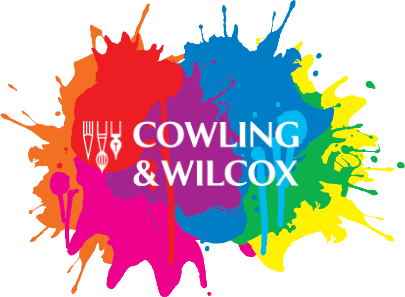This week’s Featured Artist is the delightful Tina Bone, a master of animal portraiture and nature drawing. Read on to find out what makes Tina tick.

Little Explorers
How did you get started as an artist?
I have always drawn and painted pictures since I was seven years old when my teacher entered a ‘Fairy Queen’ painting I had done at school into a county competition run by Heffers in Cambridge (now Tindall’s), and I remember winning a big box of paints and some brushes. My teacher said: “You could be an artist when you grow up, if you try hard enough”. I left school at age 15 with no qualifications; got engaged on my 16th birthday and married when I was 17 in 1967. Three children later (who had all left the “nest” by 2000), and a few paintings for family and friends along the way, at the age of 55 in March 2005, I came downstairs one morning and said to my [startled] husband: “I am going to be an artist”. I had no idea how difficult it would be and absolutely no idea how to go about it. But I persevered and took advice from all and sundry, found myself a gallery, entered lots of exhibitions (national and international), joined lots of art groups, and ten years on am still immensely enjoying the creation of pictures.
What inspires you to be creative?
For me, inspiration is the feeling that comes from deep within my heart when I see something happening in nature, or smell the scent of a beautiful flower, or even people laughing or hugging each other, or an elegant vintage car. A vision appears in my head which usually stays for a long time. But just in case I forget, I usually write down what I have thought about so that I can design and paint a picture later. I have a written list that is constantly changing as I complete a particular painting from my ‘visions’. There are continually about 30 paintings on the list to be done. Commissions on the other hand require a different sort of inspiration – and here I seek inspiration by studying the subject for a long time before hopefully producing something beautiful, or a true likeness that the commissioner will love and wish to hang on their wall.

Great Spot, Woody
How would you describe your creative process?
I spend nearly as much time preparing for the artwork as I do drawing and painting. Some artworks require a lot of research, especially in the production of wildlife art because I need to know my subjects before I can objectively produce a good painting that perfectly represents the original ‘vision’. I usually start with the vision, which goes on the list, then when I come to it again I will seek out resource photographs (usually my own), make field trips to see habitats, collect live specimens (botanical), or visit the subjects of commissions. Then I will set out and study the resource material and make sketches where needed. I draw simple designs on pieces of A4 paper (for any size painting) which gives me a rough idea of composition and elemental effects. I then draw an outline of the composition straight on to tracing paper. This enables me to erase errors in the design, but also facilitates speed of transfer on to proper paper when I am happy with my outline design sketch. For large canvases I usually design and draw a small scale version first then transfer this to the large canvas using the age-old grid squares. I treat every painting as a new adventure, so the creative process has many faces for me.
What is your favourite medium to work in and why?
Watercolour is my favourite medium because my work is very delicate, accurate and refined. I just have to produce all of the ‘nitty-gritties’ in a scene, some so small that people need a magnifying glass to see all the detail in the painting. I use special magnifying spectacles as well as a magnifying glass for some works. I have tried to paint in oils with detail, but I have not yet found a paintbrush that is suited to producing the really fine work with this medium, and the medium itself has the wrong consistency, although I have experimented with using turpentine to thin the paint and paint in thin layers which does work quite well but takes ages to complete a work because each layer has to dry before applying the next one. But watercolour is a beautiful medium for producing fine art and thus suits my type of artwork production completely. I have only tried painting with acrylics once and did not like it at all – it was like painting with plastic! Second to watercolour, I do enjoy graphite as finely pointed pencils can also help me produce accurate, detailed monochrome work.

Ralph, No!
How do you tackle a blank canvas?
Everyone has heard of ~writer’s block”; I sometimes suffer with “artist’s block”! If this happens, it is best not to try to paint at all and I go away and have a game of golf or tennis. When I return to the canvas a couple of days later, my fear of the blankness may have dissipated and hopefully I can get something down. If the feeling of inspiration and the vision are strong, there is no problem and the artwork flows out of me – not always as intended, but usually in an acceptable fashion. I am always ready to change my compositions along the way.
What do you find the most challenging about the creative process?
Simple: getting it right!
In which ways do you differentiate your work from that of other artists?
I have been told in the last ten years that I do have my own style. As mentioned above, each painting is a new adventure for me, and I do not stick consciously to a style. Being totally self-taught, I am not influenced by any other artists’ work, and have honestly never thought about my work being different. It is what it is, and each new piece is completely separate from previous works, unless I choose to link them together,which has happened a couple of times.
What are your essential tools?
Good quality professional artists watercolours (I prefer tubes to pans), sable brushes, and Aquarelle Arches 100% Hot Pressed Cotton Rag.

Nature Garden
How would you describe your studio/workspace?
My whole house is my studio! We have a 24ft lounge and I have one end (near the window for light) where sit my easels, a large desk and all my canvases and art materials, and the suite and television are at the other end. A large bedroom upstairs is my office where I have a large format professional printer and equipment to produce my own fine art prints, calendars, cards and other handcrafted items designed around my artwork, which I sell on my website and at exhibitions and shows. The little spare bedroom is full of packaging materials and picture frames; the downstairs hall and bottom stairwell contain stocks of box canvas prints and jigsaw puzzles, and I have a very large cupboard upstairs on the landing (which used to be the airing cupboard) which contains unsold framed artworks, both originals and fine art prints – keeping them in pristine condition in the dark. I have a very understanding husband!
Any tips for preparing a portfolio?
I believe a portfolio should contain a copy of all your artworks, so that it can be easily posted or shown to prospective galleries and buyers. In my humble opinion, original artwork should be kept in a safe place until it needs to be shown. Work out a system for recording your artworks from the word go. During 2005 I numbered my artworks from 0 to 20, and then realized that if I was to be professional I should have a better recording system than that! So now I assign each new artwork an ‘Artist Code’ of four digits – the first two referring to the year in which it was painted, and the second two the number in which I sketched it out or completed it, i.e. 1003 was painted in 2010 and was the third painting to be done in that year. Each time I complete an artwork I print out an A4 copy of it and place it in a file with an explanatory label on the back of it. I‘m on my second volume now and this is an instant portfolio which has served me well. I have also produced a catalogue of my work with details of each painting, which is updated each year. I print out a few copies of this for my gallery and for exhibitions, and it is also available to view on my website.

Singing Cock
Do you have a favourite art tip that you can share with our readers?
Sometimes when a painting is complex and I am having trouble making an accurate portrayal, I find it helps enormously if I disregard the subject itself and look at the work as shapes and angles of different size, especially at the painting stage, rather than eyes, ears, petals or leaves. If a drawing does not go right, rather than trying to fix it I sometimes tear it up and throw it in the bin. That feels good – and a couple of days later I will try again, and usually it turns out right. I believe that it is sometimes good to make mistakes and not be afraid to admit it. You can then put this behind you and use the mistake to make better progress the second time around.
Where can our readers find out more about you?
I have a website shop and art gallery: http://www.tinasfineart.uk. Also, if you just type my name, Tina Bone, into Google or any other search engine, you will find lots of links to different sites to which I am affiliated or subscribe to.

Guarding The Drive




















